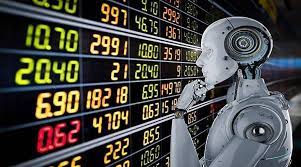In the ever-evolving landscape of financial markets, technology continues to play an increasingly pivotal role. Among the latest innovations to revolutionize trading is the advent of Forex robots. These automated trading systems have garnered forex robot attention for their potential to enhance efficiency, mitigate risks, and capitalize on market opportunities. As traders seek to harness the power of automation, understanding the intricacies of Forex robots becomes essential.
What are Forex Robots?
Forex robots, also known as Expert Advisors (EAs) in MetaTrader platforms, are software programs designed to execute trades in the foreign exchange (Forex) market automatically. These algorithms are based on predefined trading strategies, rules, and parameters encoded into their programming. By utilizing complex mathematical algorithms and historical data analysis, Forex robots aim to identify and capitalize on trading opportunities with minimal human intervention.
The Mechanics Behind Forex Robots
At the core of Forex robots lie sophisticated algorithms that analyze market conditions, price movements, and technical indicators in real-time. These algorithms are meticulously crafted to execute trades based on predefined criteria, such as specific entry and exit points, risk management parameters, and position sizing strategies.
Forex robots typically operate within the framework of either trend-following or countertrend trading strategies. Trend-following robots identify and capitalize on prevailing market trends, aiming to ride the momentum for profitable trades. Conversely, countertrend robots seek to identify overbought or oversold conditions, attempting to profit from market reversals.
Furthermore, Forex robots can employ a diverse range of technical indicators, such as moving averages, relative strength index (RSI), stochastic oscillators, and Fibonacci retracements, to inform their trading decisions. Some advanced robots even incorporate machine learning and artificial intelligence techniques to adapt to changing market dynamics and improve performance over time.
Advantages of Forex Robots
- Automation and Efficiency: Forex robots eliminate the need for manual trade execution, allowing traders to execute trades swiftly and efficiently, even in volatile market conditions. This automation also reduces the emotional biases that often plague human traders, such as fear, greed, and indecision.
- 24/7 Market Monitoring: Unlike human traders who require rest, Forex robots can monitor the markets 24 hours a day, 7 days a week, without fatigue. This continuous monitoring enables them to capitalize on trading opportunities across different time zones and sessions, providing a competitive edge in the global Forex market.
- Backtesting and Optimization: Before deploying a Forex robot in live trading, traders can backtest their strategies using historical market data to assess performance and refine their algorithms. This iterative process allows for optimization and fine-tuning to enhance profitability and mitigate risks.
- Discipline and Consistency: Forex robots adhere strictly to predefined trading rules and parameters, ensuring discipline and consistency in trading execution. By removing emotional biases and impulsive decision-making, robots can maintain a steady approach to trading, potentially improving long-term results.
Challenges and Considerations
While Forex robots offer compelling advantages, they are not without challenges and considerations:
